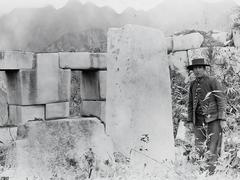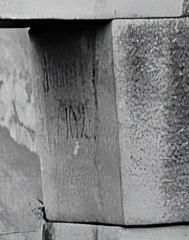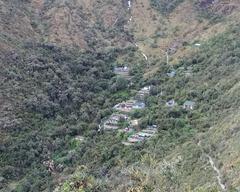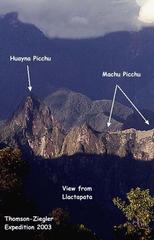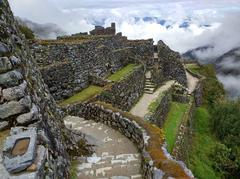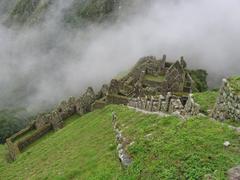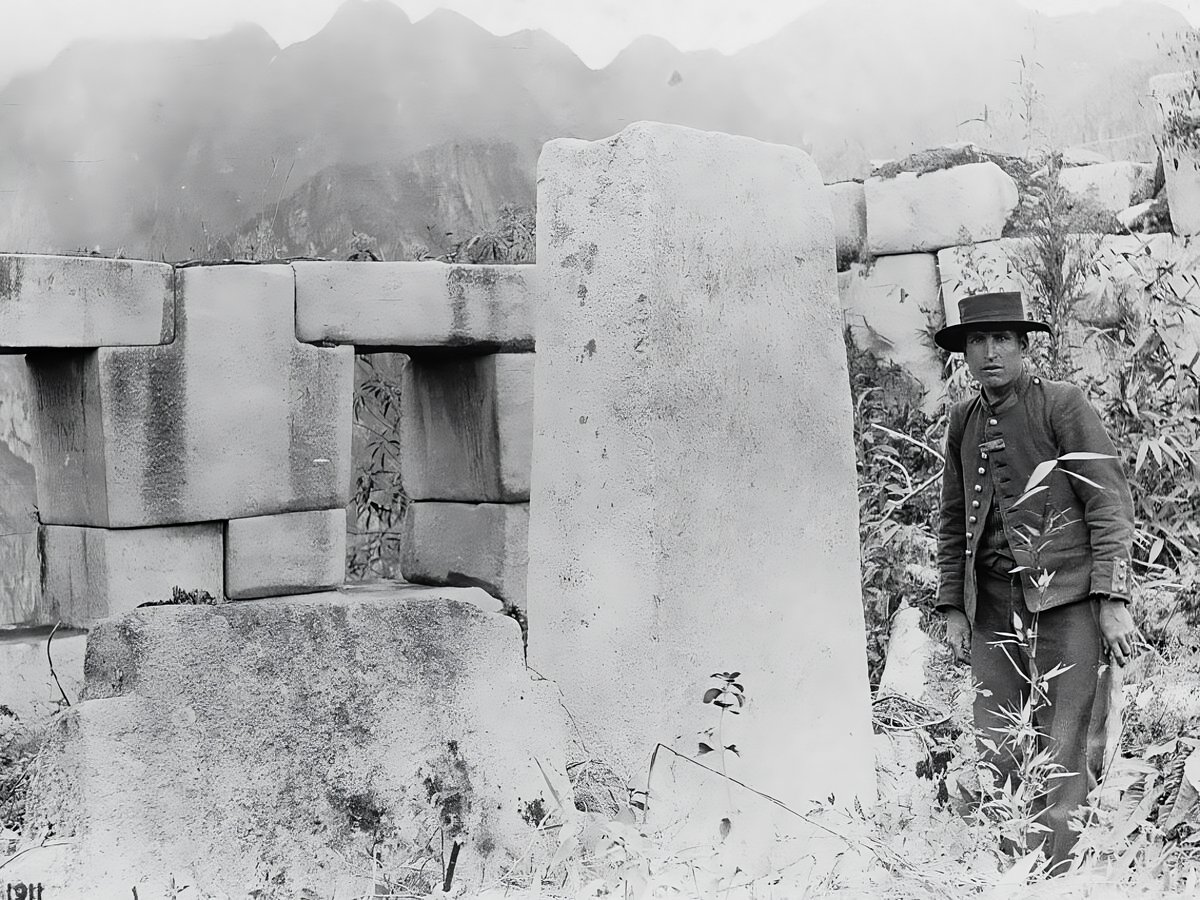
Visiting Hours, Tickets, and Historical Sites of Ciudadela de Machu Picchu, Machu Picchu, Peru
Date: 16/07/2024
Overview of Ciudadela de Machu Picchu
Machu Picchu, often referred to as the Ciudadela de Machu Picchu, stands as one of the most captivating archaeological sites in the world. Nestled high in the Andes Mountains of Peru at an altitude of 2,430 meters (7,970 feet), this 15th-century Inca citadel offers a profound glimpse into the ingenuity and architectural brilliance of the Inca civilization. Discovered by American historian Hiram Bingham in 1911, Machu Picchu quickly gained international fame and has since become a symbol of Peru’s rich cultural heritage (National Geographic).
Constructed under the reign of Inca emperor Pachacuti, Machu Picchu showcases the Inca’s mastery of dry-stone construction techniques, where stones are cut to fit together without mortar. This architectural marvel has withstood centuries of seismic activity, a testament to the advanced engineering skills of the Inca people (Smithsonian Magazine). The site includes various structures such as the Temple of the Sun, the Room of the Three Windows, and the Intihuatana Stone, each reflecting the Inca’s deep connection with nature and their religious beliefs (History.com).
Today, Machu Picchu is not only a UNESCO World Heritage Site but also one of the New Seven Wonders of the World, attracting over a million visitors annually. It serves as a living laboratory for archaeologists and historians, continually unveiling new insights into Inca society and their way of life. This guide aims to provide comprehensive information on visiting Machu Picchu, including its historical and cultural significance, visitor details such as ticket prices and opening hours, travel tips, and nearby attractions, ensuring you have an unforgettable experience at this iconic site.
Content Outline
- Introduction
- History of Machu Picchu
- Discovery and Early Exploration
- Inca Origins and Construction
- Purpose and Function
- Abandonment and Rediscovery
- Archaeological Significance
- Preservation Efforts
- Modern-Day Significance
- Visitor Information
- Visiting Hours
- Ticket Prices
- Travel Tips
- Nearby Attractions
- Accessibility
- Key Structures and Their Historical Context
- The Intihuatana Stone
- The Temple of the Sun
- The Room of the Three Windows
- Impact of Hiram Bingham’s Discovery
- Ongoing Research and Discoveries
- Cultural and Historical Legacy
- FAQ
- Conclusion
Exploring Machu Picchu - History, Tickets, Visiting Hours, and Travel Tips
Introduction
Machu Picchu, often referred to as the Ciudadela de Machu Picchu, is a historical gem that continues to captivate the imagination of people worldwide. This article delves into its rich history, provides essential visitor information, and offers travel tips for an unforgettable journey to this iconic Inca site.
History of Machu Picchu
Discovery and Early Exploration
The Ciudadela de Machu Picchu was brought to international attention by American historian Hiram Bingham in 1911. Guided by local indigenous farmers, Bingham stumbled upon the site while searching for the last Inca stronghold of Vilcabamba. His subsequent publications and photographs introduced the world to this remarkable archaeological site (National Geographic).
Inca Origins and Construction
Machu Picchu is believed to have been constructed in the mid-15th century under the reign of the Inca emperor Pachacuti. The site is a testament to the architectural prowess of the Inca civilization, featuring sophisticated dry-stone construction techniques. The city was built using a method called ashlar, where stones are cut to fit together without mortar. This technique has allowed the structures to withstand earthquakes, a common occurrence in the region (Smithsonian Magazine).
Purpose and Function
The exact purpose of Machu Picchu remains a subject of debate among historians and archaeologists. Some theories suggest it was a royal estate for Pachacuti, while others propose it served as a religious site or a retreat for the Inca elite. The presence of temples, such as the Temple of the Sun and the Room of the Three Windows, supports the idea of its religious significance (History.com).
Abandonment and Rediscovery
Machu Picchu was abandoned in the 16th century, likely due to the Spanish conquest of the Inca Empire. However, the Spanish never discovered the site, which allowed it to remain relatively intact. Over the centuries, the jungle reclaimed the city, hiding it from the outside world until its rediscovery in the early 20th century (BBC).
Archaeological Significance
The site has provided invaluable insights into Inca civilization, including their engineering, agricultural practices, and social organization. Excavations have uncovered a wealth of artifacts, including pottery, tools, and human remains, which have helped scholars piece together the daily life and rituals of the Inca people (UNESCO).
Preservation Efforts
Since its rediscovery, Machu Picchu has faced numerous challenges, including environmental degradation and the impact of tourism. In 1983, it was designated a UNESCO World Heritage Site, which has helped to bolster preservation efforts. The Peruvian government, in collaboration with international organizations, has implemented measures to protect the site, such as limiting the number of daily visitors and establishing conservation programs (UNESCO).
Modern-Day Significance
Today, Machu Picchu is one of the most visited tourist destinations in the world, attracting over a million visitors annually. It is not only a symbol of Peru’s rich cultural heritage but also a source of national pride. The site continues to captivate the imagination of people worldwide, serving as a reminder of the ingenuity and resilience of the Inca civilization (Peru Travel).
Visitor Information
Visiting Hours
Machu Picchu is open daily from 6:00 AM to 5:00 PM. It is recommended to arrive early to avoid crowds.
Ticket Prices
Tickets can be purchased online or at the entrance. Prices vary for adults, students, and children. It is advisable to book tickets in advance due to high demand.
Travel Tips
It is recommended to bring water, comfortable walking shoes, and sun protection. Be prepared for varying weather conditions.
Nearby Attractions
The nearby town of Aguas Calientes offers additional sites to explore, including the hot springs and local markets.
Accessibility
Machu Picchu has areas that are accessible for visitors with mobility issues, but certain sections may require assistance.
Key Structures and Their Historical Context
The Intihuatana Stone
The Intihuatana Stone, often referred to as the “Hitching Post of the Sun,” is one of the most significant artifacts at Machu Picchu. It is believed to have been used as an astronomical clock or calendar by the Inca priests. The stone’s precise alignment with the sun during the solstices indicates the advanced understanding of astronomy possessed by the Inca (Ancient History Encyclopedia).
The Temple of the Sun
The Temple of the Sun is another crucial structure, featuring a semi-circular construction that aligns with the June solstice sunrise. This temple was likely used for religious ceremonies and astronomical observations. The temple’s design and location underscore the importance of solar worship in Inca culture (Live Science).
The Room of the Three Windows
The Room of the Three Windows is part of the Sacred Plaza and is thought to have held significant ceremonial importance. The three trapezoidal windows are believed to represent the three realms of Inca mythology: the underworld, the earthly realm, and the heavens. This structure highlights the Inca’s architectural ingenuity and their symbolic representation of cosmology (National Geographic).
Impact of Hiram Bingham’s Discovery
Hiram Bingham’s discovery of Machu Picchu had a profound impact on the study of Inca civilization. His work led to the establishment of the Yale Peruvian Expedition, which conducted extensive excavations and research at the site. Although Bingham’s methods and the removal of artifacts to Yale University have been subjects of controversy, his contributions to the field of archaeology are undeniable (Yale University).
Ongoing Research and Discoveries
Research at Machu Picchu is ongoing, with new discoveries continuing to shed light on the site’s history and the Inca civilization. Recent studies using advanced technologies, such as LiDAR (Light Detection and Ranging), have revealed previously hidden structures and terraces, providing further insights into the site’s layout and usage (Science Magazine).
Cultural and Historical Legacy
Machu Picchu’s cultural and historical legacy extends beyond its physical structures. It represents the pinnacle of Inca engineering and serves as a symbol of the cultural identity and heritage of the Andean people. The site’s enduring mystery and beauty continue to inspire and attract scholars, tourists, and adventurers from around the globe (UNESCO).
FAQ
What are the visiting hours for Machu Picchu?
Machu Picchu is open daily from 6:00 AM to 5:00 PM.
How much are tickets to Machu Picchu?
Ticket prices vary. It is advisable to check the official website for the latest prices and book in advance.
Are there guided tours available?
Yes, guided tours are available and can be booked online or at the entrance.
Conclusion
By understanding the rich history of Machu Picchu and planning your visit with the right information, you can gain a deeper appreciation for this extraordinary site and the civilization that created it. For more travel tips and updates, download our mobile app Audiala, check out our related posts, or follow us on social media.
Summary of Key Points
The Ciudadela de Machu Picchu remains an enduring symbol of the Inca civilization’s architectural prowess, cultural significance, and spiritual depth. Its discovery by Hiram Bingham in 1911 brought this ‘Lost City of the Incas’ into the global spotlight, revealing a site that continues to captivate and inspire visitors from around the world (Yale University).
Visitors to Machu Picchu can immerse themselves in the rich history and breathtaking beauty of this sacred site, exploring its key structures like the Temple of the Sun, the Room of the Three Windows, and the Intihuatana Stone. The site’s alignment with astronomical events and its sophisticated construction techniques underscore the advanced understanding and reverence for nature held by the Inca people (Live Science).
Efforts to preserve Machu Picchu have been significant, with UNESCO designation and various conservation programs aimed at protecting this invaluable heritage from environmental degradation and the impacts of tourism. As a major economic driver for Peru, Machu Picchu also supports local communities and conservation efforts through tourism revenue (UNESCO).
By preparing adequately for your visit, respecting local customs, and appreciating the site’s historical context, you contribute to the ongoing preservation and understanding of Machu Picchu. Whether you are drawn by its historical significance, architectural marvels, or spiritual ambiance, a visit to Machu Picchu promises an enriching and unforgettable journey into the heart of Incan civilization.
